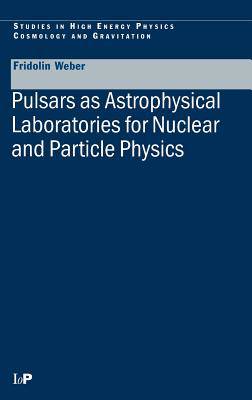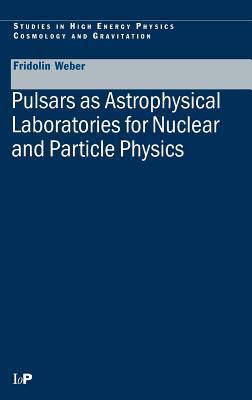
En raison d'une grêve chez bpost, votre commande pourrait être retardée. Vous avez besoin d’un livre rapidement ? Nos magasins vous accueillent à bras ouverts !
- Retrait gratuit dans votre magasin Club
- 7.000.000 titres dans notre catalogue
- Payer en toute sécurité
- Toujours un magasin près de chez vous
En raison de la grêve chez bpost, votre commande pourrait être retardée. Vous avez besoin d’un livre rapidement ? Nos magasins vous accueillent à bras ouverts !
- Retrait gratuit dans votre magasin Club
- 7.000.0000 titres dans notre catalogue
- Payer en toute sécurité
- Toujours un magasin près de chez vous
Pulsars as Astrophysical Laboratories for Nuclear and Particle Physics
Fridolin Weber
175,95 €
+ 351 points
Description
Pulsars, generally accepted to be rotating neutron stars, are dense, neutron-packed remnants of massive stars that blew apart in supernova explosions. They are typically about 10 kilometers across and spin rapidly, often making several hundred rotations per second. Depending on star mass, gravity compresses the matter in the cores of pulsars up to more than ten times the density of ordinary atomic nuclei, thus providing a high-pressure environment in which numerous particle processes, from hyperon population to quark deconfinement to the formation of Boson condensates, may compete with each other. There are theoretical suggestions of even more "exotic" processes inside pulsars, such as the formation of absolutely stable strange quark matter, a configuration of matter even more stable than the most stable atomic nucleus, ^T56Fe. In the latter event, pulsars would be largely composed of pure quark matter, eventually enveloped in nuclear crust matter. These features combined with the tremendous recent progress in observational radio and x-ray astronomy make pulsars nearly ideal probes for a wide range of physical studies, complementing the quest of the behavior of superdense matter in terrestrial collider experiments. Written by an eminent author, Pulsars as Astrophysical Laboratories for Nuclear and Particle Physics gives a reliable account of the present status of such research, which naturally is to be performed at the interface between nuclear physics, particle physics, and Einstein's theory of relativity.
Spécifications
Parties prenantes
- Auteur(s) :
- Editeur:
Contenu
- Nombre de pages :
- 696
- Langue:
- Anglais
- Collection :
Caractéristiques
- EAN:
- 9780750303323
- Date de parution :
- 01-05-99
- Format:
- Livre relié
- Format numérique:
- Genaaid
- Dimensions :
- 164 mm x 243 mm
- Poids :
- 1383 g

Les avis
Nous publions uniquement les avis qui respectent les conditions requises. Consultez nos conditions pour les avis.






